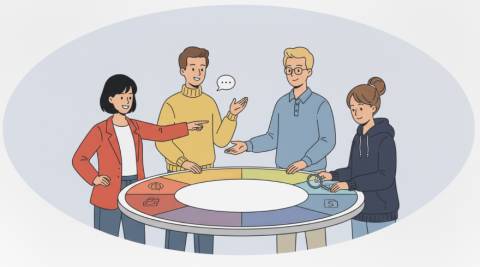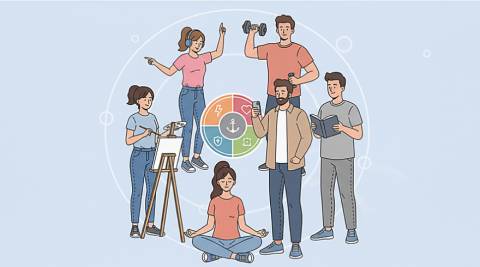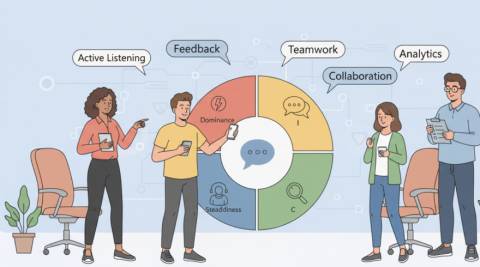Explore Modern Communication Styles Assessment Online

Understanding DISC and Why a No-Cost Start Makes Sense
Behavioral profiling helps people decode everyday interactions, reduce friction, and make smarter decisions about collaboration. The DISC model distills patterns into four core tendencies Dominance, Influence, Steadiness, and Conscientiousness so you can map how you respond under pressure, how you prefer to communicate, and the conditions that bring out your best work. By translating fuzzy interpersonal dynamics into a simple framework, the approach quickly becomes a shared language teams can rely on for clarity and speed. Whether you are seeking career direction or streamlining a growing team, beginning with an accessible option can accelerate progress without adding costs.
You can explore deeper self-awareness with a DISC assessment online free as a credible starting point, especially if you want to try before you buy. Many platforms use concise questionnaires that surface immediate insights, followed by brief tips on strengths, blind spots, and collaboration habits. These summaries won’t replace a full professional debrief, yet they reliably spark reflection and open vital conversations about expectations. When you combine personal curiosity with structured feedback, the findings become practical rather than just interesting details.
Plenty of learners test the waters before committing to advanced reports or coaching. Many newcomers sample a free DISC assessment online to gauge their baseline before investing in deeper development. Pair that with journaling, specific workplace examples, and feedback from trusted colleagues to verify patterns. Over a few weeks, you can compare situations tight deadlines, client meetings, brainstorming to see where your style helps or hinders outcomes. That evidence turns an abstract profile into a roadmap for behavior under real conditions.
- Clarify triggers that change your pace or tone.
- Spot environments that energize or drain you.
- Translate tendencies into daily habits that stick.
How DISC Works and What the Results Reveal
The engine behind DISC is a structured questionnaire that measures intensity across the four primary dimensions. Instead of labeling you with a single letter, robust interpretations explain how combinations show up at work, in conflict, and while making decisions. Results often include bar graphs, brief narratives, and scenario guidance, making it easier to apply the insights to meetings, feedback, and project planning. The most useful reports highlight what others experience from your behavior, which shortens the path from awareness to action.
Another path is trying a free online DISC assessment that delivers quick scores on the four factors, then summarizes your behavioral signatures. Some tools add career-oriented suggestions or leadership prompts to translate tendencies into next steps. You might also see specific suggestions for email tone, meeting pacing, and how to adapt to opposite styles during negotiation. When interpreted thoughtfully, even a concise snapshot can produce measurable upgrades in collaboration.
Some platforms pair the test with a free online communication style assessment that explains tone, pace, and word choice in practical language. That add-on helps you recalibrate when stakes rise, such as during escalations or tight delivery windows. You will recognize when to slow down for detail-heavy conversations or when to accelerate to drive alignment. Over time, this calibration becomes second nature, reducing misunderstandings and increasing trust with clients and colleagues alike.
- Dominance: direct, decisive, driven by outcomes.
- Influence: social, persuasive, energized by interaction.
- Steadiness: calm, patient, supportive in groups.
- Conscientiousness: analytical, precise, quality-focused.
Key Benefits for Individuals, Managers, and Teams
Great teams thrive on clear expectations, tailored feedback, and predictable collaboration norms. DISC helps you build those norms faster by normalizing differences and giving everyone a shared vocabulary. Managers can shape roles around natural strengths, reduce attrition by aligning work with motivators, and guide conflict toward productive resolution. Individuals learn when to lean into strengths and when to flex such as adding brevity to long explanations or inviting more voices into fast decisions.
If you want a low-barrier entry, a DISC assessment free online test can highlight patterns you might miss in daily interactions, like a tendency to over-explain when stakes feel high. The snapshot isn’t the destination; it’s a compass. With just a little coaching or self-directed experimentation, you can turn rough edges into reliable assets. The benefits compound as you standardize rituals agenda design, decision timelines, follow-up formats around the team’s mixed preferences.
Teams often pilot an online DISC assessment during onboarding to normalize vocabulary around behavior, accountability, and feedback tone. That shared map speeds trust because people can name misalignment early rather than letting frustration simmer. Leaders also gain a clearer picture of skills to cultivate for succession planning. In performance reviews, the framework makes milestones concrete: behaviors shift from fuzzy opinions to observable patterns everyone can DISCuss objectively.
- Fewer avoidable conflicts and faster repair cycles.
- Role clarity that aligns with natural motivations.
- Meeting structures that respect different processing speeds.
- Hiring and onboarding that integrate culture with performance.
Step-by-Step: From Taking the Test to Applying Insights
Success with DISC depends on thoughtful preparation, honest answers, and rigorous follow-through. Start by picking a reputable provider, set aside quiet time, and answer based on typical behavior rather than aspirational ideals. Right after finishing, jot down two or three scenarios where the results match your lived experience. Then list one high-stakes situation where your instinctive style could backfire unless you adapt.
New users typically take DISC assessment online free to test the waters and understand report structure before considering premium options. Next, schedule a focused review session solo or with a colleague to extract practical moves you can try this week. Keep the actions small and observable, like changing how you open a meeting or how you summarize decisions. After seven to ten days, revisit those moves and capture what improved and what still needs tuning.
Facilitators may ask participants to take DISC assessment online before workshop day to streamline activities and create richer peer coaching. A prework plan might include a short reflection, one action experiment, and a question for the group. During the session, role-play tricky moments pushing for a decision, challenging an idea, or negotiating scope so people can practice flexing under pressure. Reinforce wins in shared channels to make behavioral change visible and repeatable.
- Prepare: Quiet space, honest responses, current role in mind.
- Interpret: Highlight two strengths, one risk, one adaptation.
- Apply: Prototype a tiny behavior change in a real meeting.
- Review: Capture evidence and refine the next experiment.
Choosing a Reliable Tool and Reading the Fine Print
Free platforms vary in quality, transparency, and depth of recommendations. Strong options DISClose their scoring approach, describe the limits of the snapshot, and offer clear next steps for application in the workplace. You want a concise readout you can act on, paired with examples and language you can borrow for emails, check-ins, and presentations. If a site hides its method or offers generic advice, proceed cautiously and validate the findings through peer feedback.
For budget-conscious learners, an online free DISC assessment can still surface actionable insights when interpreted well and paired with simple habit changes. A solid summary should make it easy to adapt communication and prioritize tasks with greater clarity. Even better, look for short exercises that help you role-play opposite styles and practice framing messages for different audiences. The more concrete the guidance, the faster you will see results in meetings and project execution.
When comparing providers, a free DISC online assessment should DISClose its scoring logic and any limits so you can set appropriate expectations. Reflect on data privacy, the number of questions, and whether results are downloadable for later review. If possible, test with a colleague and cross-compare interpretations to make sure patterns feel accurate. Then decide whether a deeper report or expert feedback is worth the upgrade for your goals.
| Feature | What It Means | Typical Free Offering | When to Upgrade |
|---|---|---|---|
| Question Count | More items increase reliability and nuance | 12–30 items with basic scoring | Complex roles or leadership pipelines |
| Report Depth | How detailed the narratives and tips become | 1–4 pages with brief insights | Coaching, conflict work, strategic roles |
| Team Tools | Aggregated views and comparative maps | Individual-only summaries | Team diagnostics and workshop design |
| Data Privacy | How results are stored and shared | Basic privacy policy | Compliance, enterprise standards |
- Favor transparency about methodology and data handling.
- Seek examples that mirror your role and industry context.
- Pilot with a peer to pressure-test accuracy and usefulness.
Best Practices, Ethics, and Common Pitfalls
Profiles are tools, not verdicts. The most frequent mistake is treating letters like labels or excuses, which narrows growth and erodes trust. Instead, use results as hypotheses to test in real interactions, and invite others to tell you when your adaptation lands well. Share only the details you are comfortable DISClosing, and make sure any team-wide program has clear consent, opt-out options, and a plan for how the information will be used. Ethical use turns self-knowledge into collective advantage.
Before choosing a tool, scan sample questions from a DISC assessment test online to ensure clarity and cultural fairness across diverse backgrounds. Ambiguous wording can skew outcomes, so look for plain language and balanced choices. If you manage others, emphasize that no one should feel boxed in by a category; people are complex and can flex across contexts. Frame the work around shared goals fewer bottlenecks, better decisions, and reduced friction rather than personality judgments.
To round out perspective, complement results with an online communication style assessment that emphasizes practical language tips you can apply immediately. Combine that with simulations, feedback circles, and short retrospectives after big meetings. Over a quarter, you will see measurable shifts: clearer agendas, tighter decisions, and healthier debate. The payoff is a culture where people can disagree productively while staying aligned on outcomes.
- Avoid stereotyping; DISCuss behaviors, not identity.
- Protect privacy; store summaries securely and share thoughtfully.
- Focus on experiments; measure outcomes, not labels.
FAQ: Practical Answers About Free DISC Options
How accurate are brief web-based DISC snapshots?
Short instruments can be surprisingly useful for pattern awareness, though they lack the depth and validation of longer, professionally administered versions. Treat them as a starting hypothesis, validate with real examples, and iterate your interpretations over time.
Can I use a quick profile for hiring decisions?
Use caution. Profiles should inform structured interviews and job simulations, not replace them. Always comply with local regulations, maintain fairness, and complement results with evidence from work samples and reference checks.
What should I look for in a trustworthy free tool?
Seek transparency about methodology, clear privacy policies, practical guidance tied to everyday scenarios, and language that avoids stereotyping. Testing with a peer and comparing notes can help gauge credibility.
How do I turn insights into daily habits?
Pick one behavior to prototype each week, such as shortening status updates or inviting a quieter colleague to weigh in. Track outcomes, gather feedback, and refine until the habit sticks under pressure.
Do teams need a facilitator to get value?
Not always. Self-led groups can use a simple agenda: share highlights, identify collaboration friction, and commit to one experiment per person. A skilled facilitator can accelerate progress, but consistent practice drives lasting gains.
Latest News



